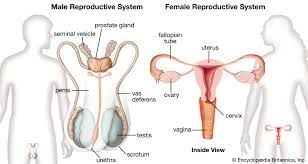A court has ruled Ontario must pay for a penis-sparing vaginoplasty for a person who identifies as neither fully female nor fully male.
Ontario has been ordered to pay for surgery for a resident who is seeking to have a vagina constructed while leaving their penis intact.
Denying the procedure would infringe on the person’s Charter-protected right to security of the person, an Ontario court said in its ruling.
The unanimous decision by a three-member panel of judges of Ontario’s Divisional Court could expand access to a novel “bottom surgery” for people who identify as non-binary, meaning neither fully male nor fully female.
The Ontario resident, identified in court documents as K.S., has been locked in a legal battle with the Ontario Health Insurance Plan since 2022, when OHIP denied a funding request to have a penile preserving vaginoplasty performed at a clinic in Austin, Texas.
The surgery, which is not available anywhere in Canada, involves creating a vaginal canal, or opening, without removing the penis.
K.S., 33, was born male but identifies as female dominant and uses a feminine name.
OHIP denied her request for funding, arguing that the procedure is not included on its list of sex-reassignment procedures, and is therefore not an insured service.
K.S. appealed OHIP’s decision to Ontario’s Health Services Appeal and Review Board, arguing that forcing her to have her penis removed would invalidate her identity and be akin to an illegal act of conversion therapy.
She also worried about the risk of complications and urinary incontinence from the urological rerouting, and the risk of orgasm dysfunction. She argued the procedure she is seeking abroad is like standard vaginoplasties performed in Ontario, but without the additional procedure, namely, the penectomy.
The appeal board overturned OHIP’s decision, ruling that a vaginoplasty is among the genital surgeries listed for public coverage and need not inherently include removal of the penis. The board therefore ruled the procedure eligible for public funding.
OHIP appealed the board’s decision to the Divisional Court, arguing the review board erred in finding a penis-sparing vaginoplasty is specifically listed as an insured service, and that it failed to consider that the unorthodox procedure is considered an experimental procedure in Ontario, and, therefore, not eligible for funding.
Just because vaginoplasty is listed as an insured service doesn’t mean any type of vaginoplasty qualifies, OHIP argued in court.
The court disagreed. Vaginoplasty and penectomy are listed as discrete, separate services on Ontario’s list of surgeries eligible for funding, the court said. “The fact that most people who have a vaginoplasty have it done in a way that also involves a penectomy” doesn’t change the provision. If the province had intended for only one type of vaginoplasty to be insured (vaginoplasty with penis removal) it should have drafted the list differently, the court said.
The court said the appeal board’s conclusion was also consistent with standards of care developed by the World Professional Association for Transgender Health (WPATH) — an influential group whose guidelines for gender-affirming care for children and youth were found to lack “developmental rigour” in a sweeping review released this week.












No comments:
Post a Comment